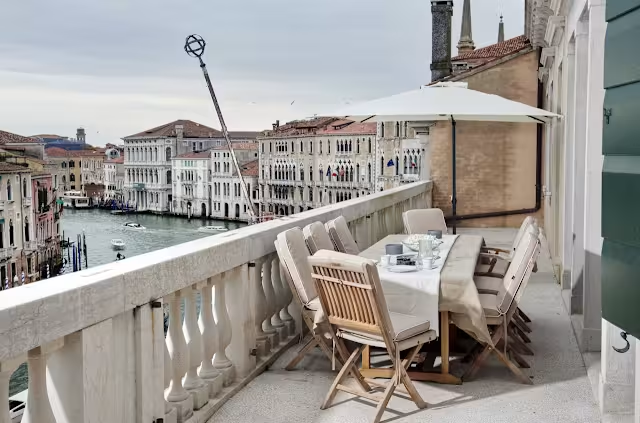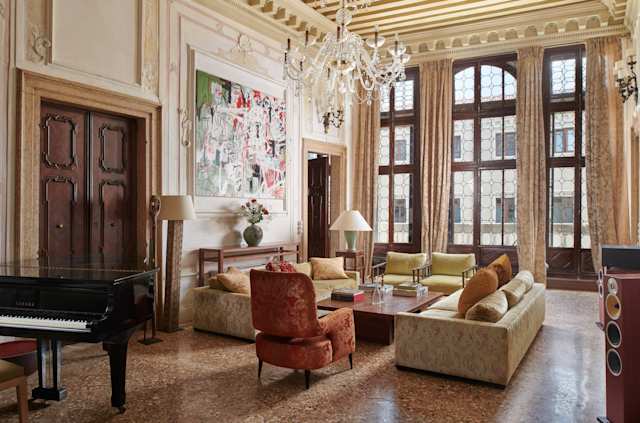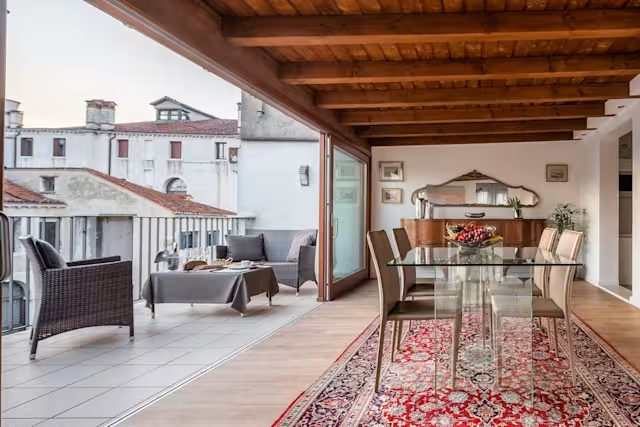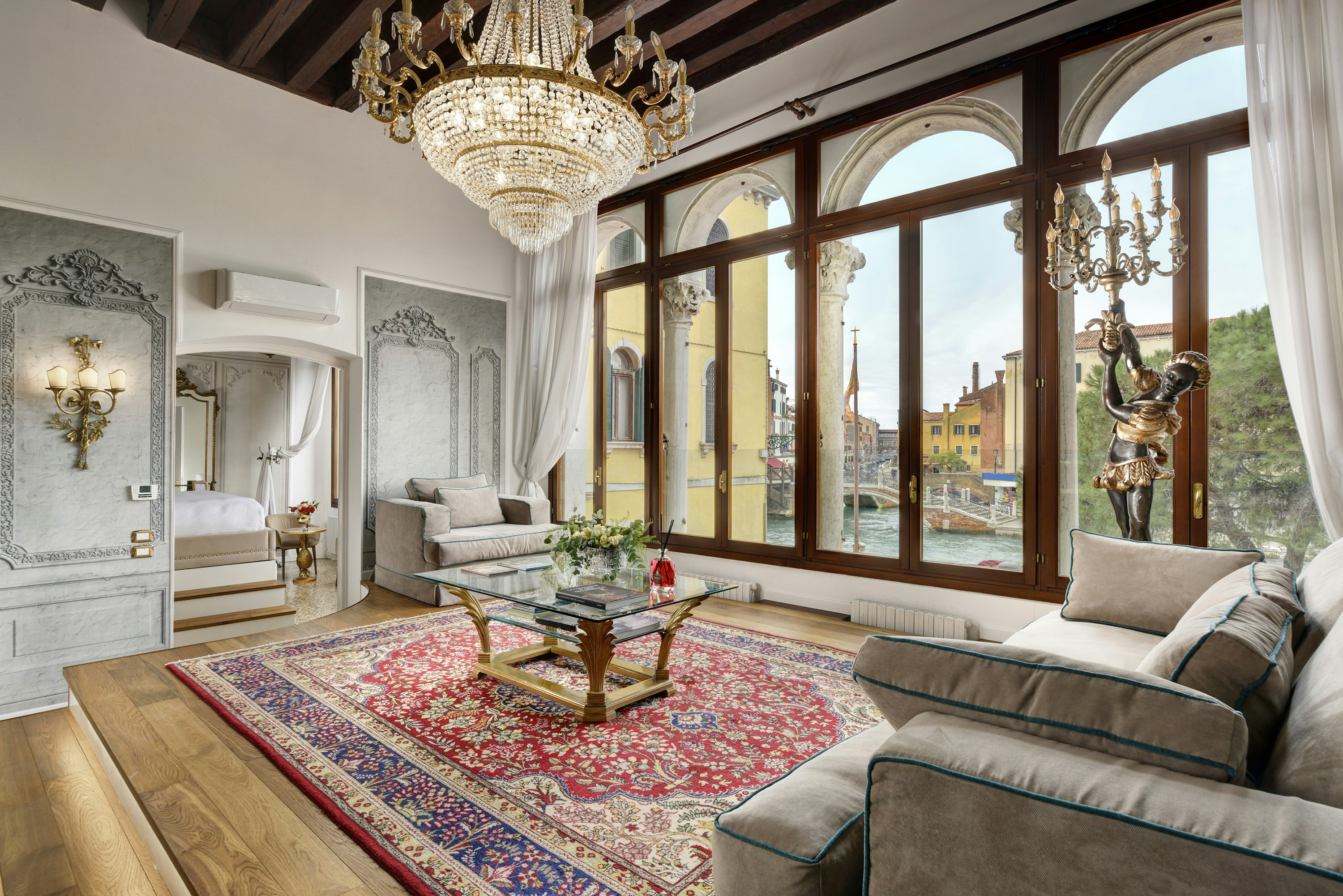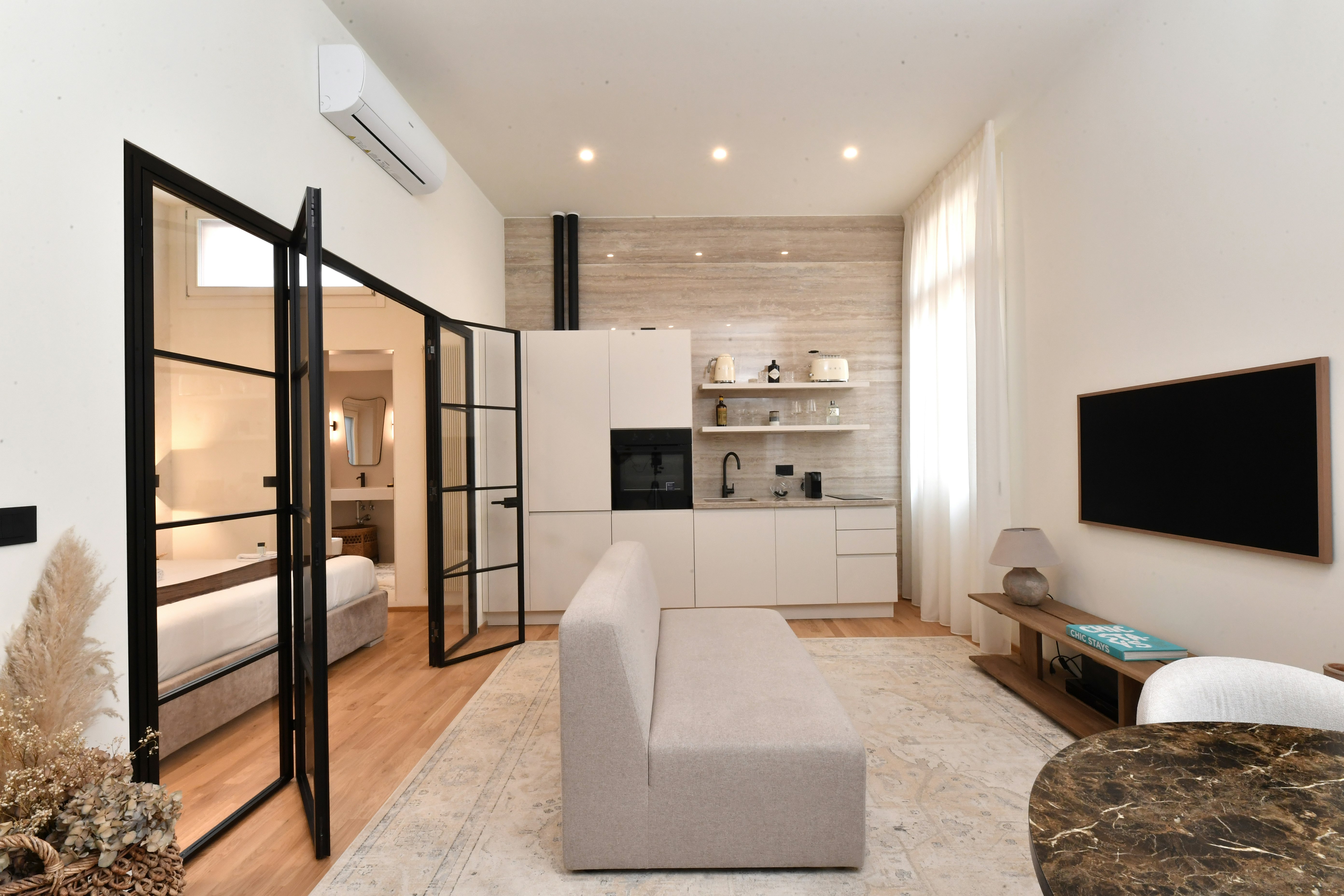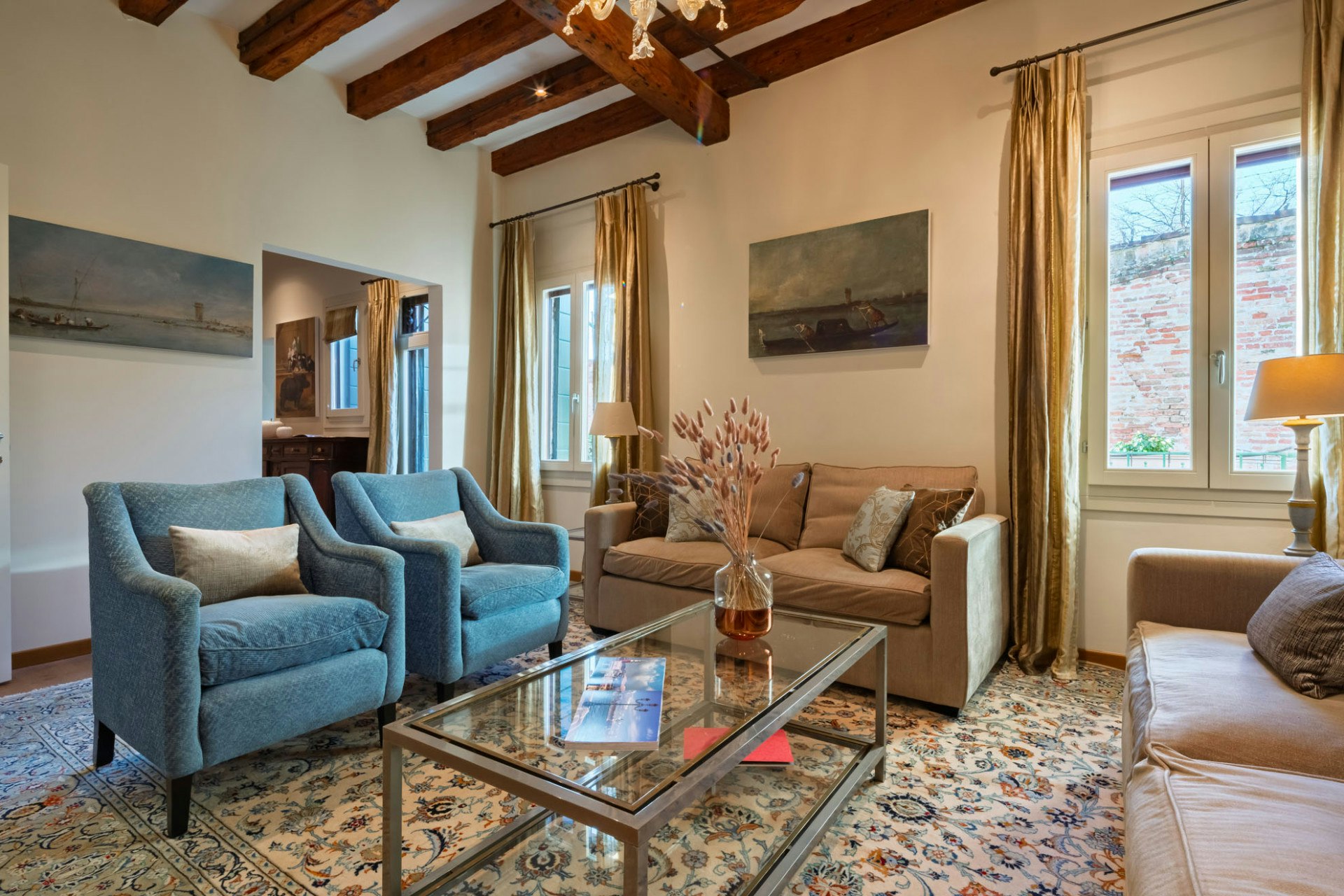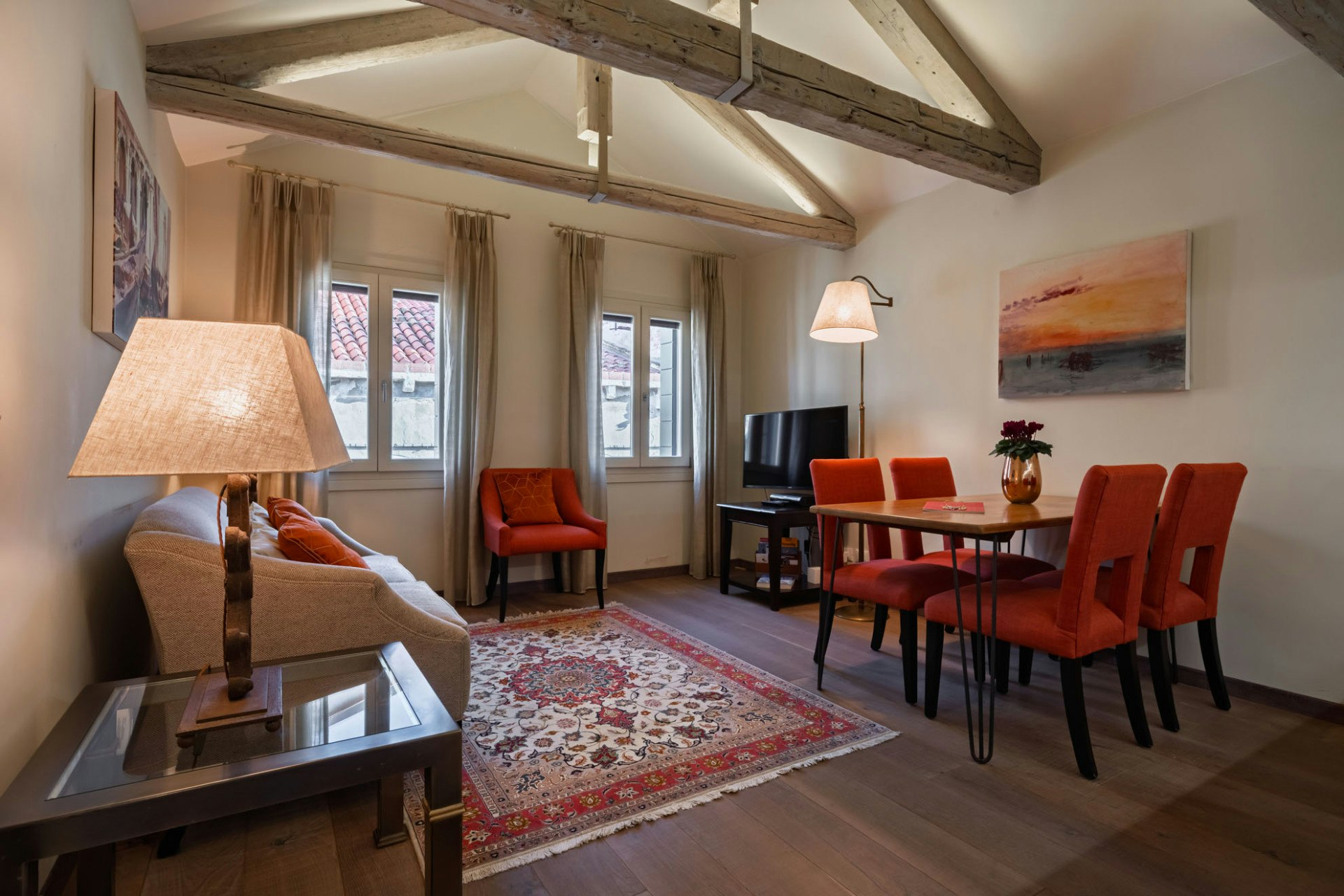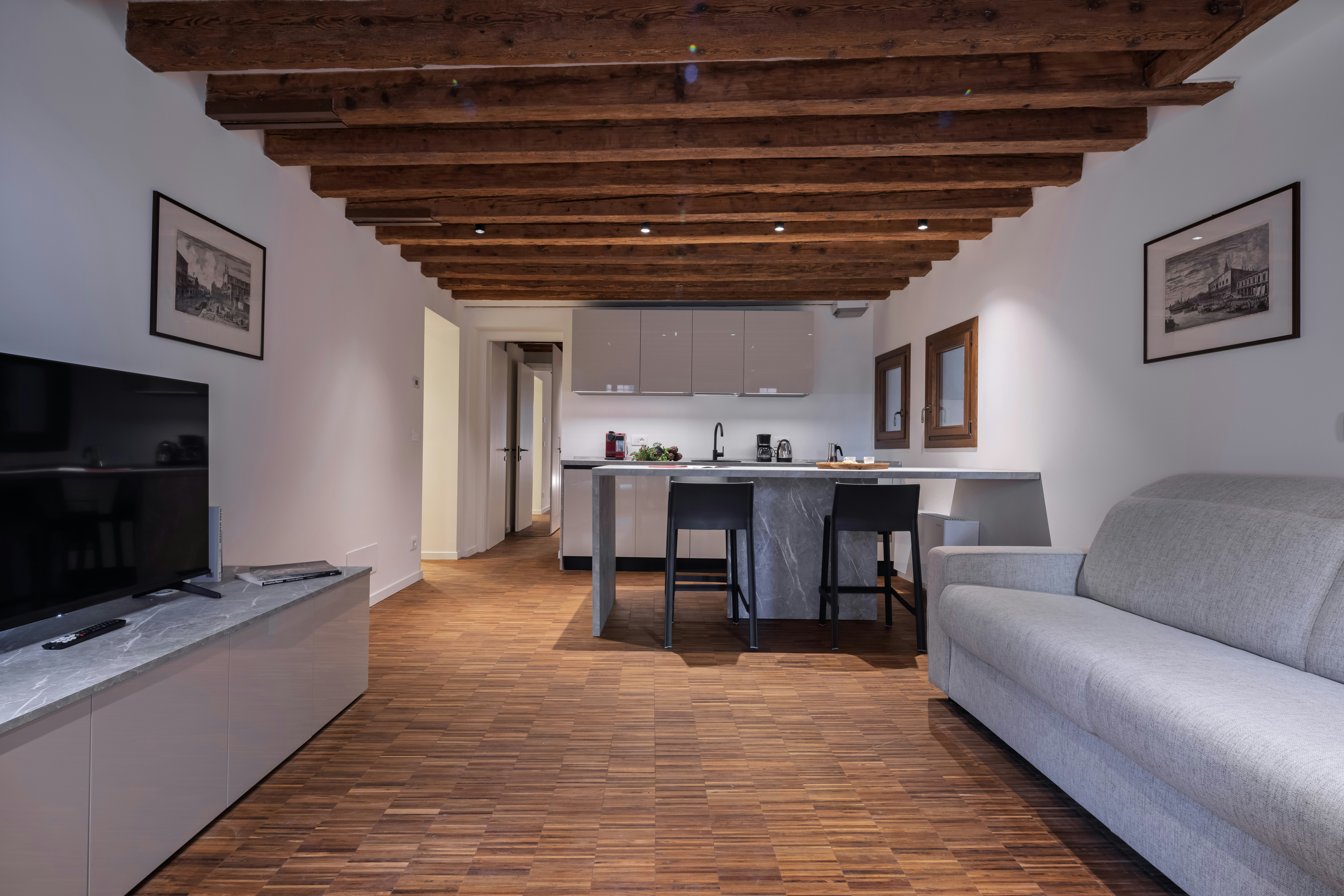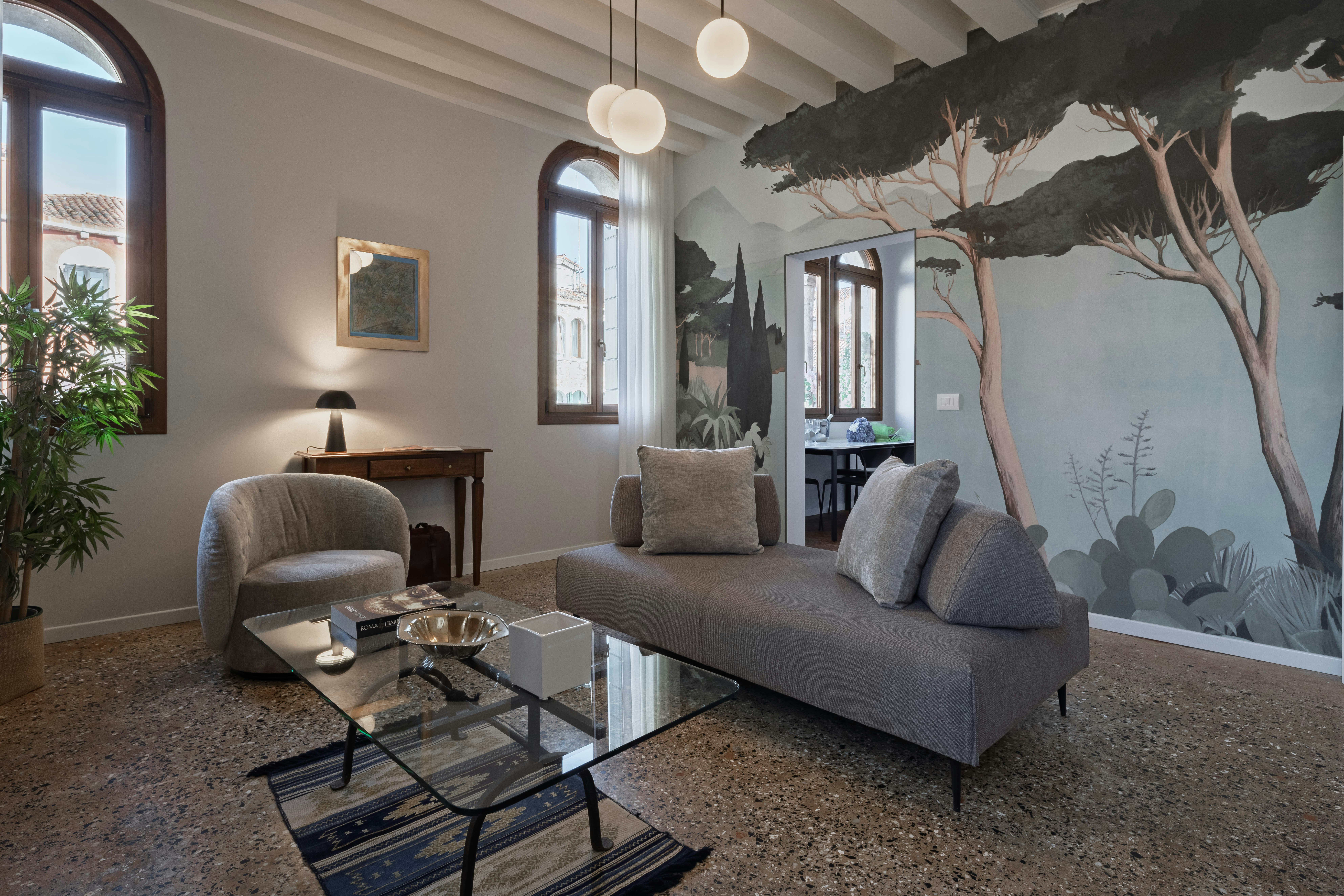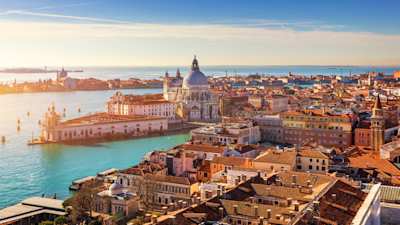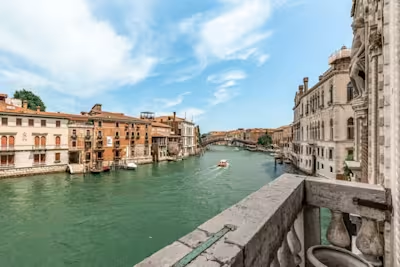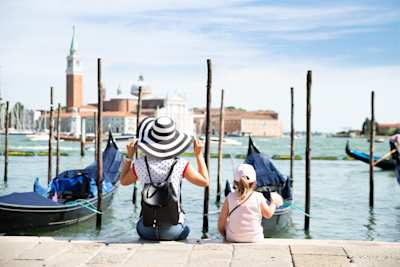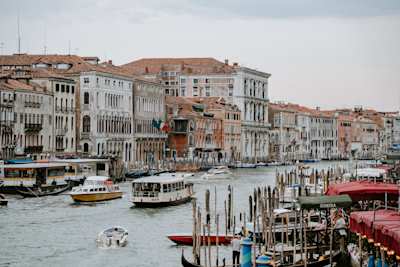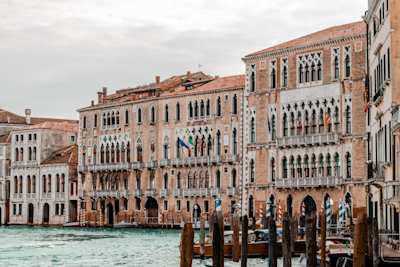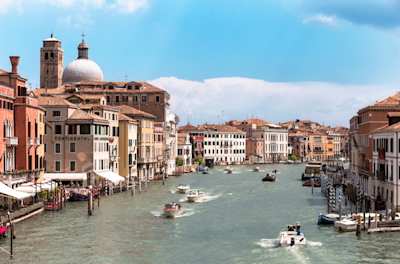Areas To Avoid in Venice & Other Tips To Evade the Crowds
Despite its beauty, Venice can become hectic and unbearable if you don’t plan your visit right. Here are some ways to discover a different side to the city
~

With its labyrinth of canals and spectacular buildings, it’s no surprise that Venice is one of Italy’s most visited cities. If you’ve seen photos of large cruise ships spilling with tourists and long queues for attractions, you may be wondering if it’s really worth visiting. Before you change your plans, our travel experts at Plum Guide are here to show you how to experience the city at a slower pace. Read our guide on how to stay clear of tourists, including the overcrowded areas to avoid in Venice, the best travel times, and other tips and tricks.
Visit during the off-season
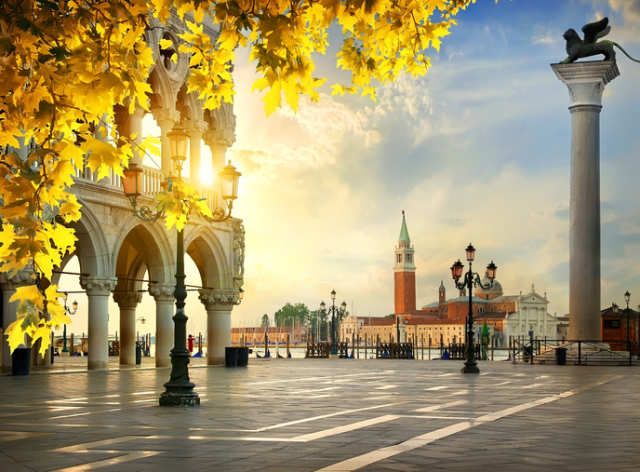
Palace of Doges in San Marco Square on autumn day with yellow leaves, Venice, Italy
Planning your trip during the shoulder season is the best way to avoid the overcrowded areas in Venice. Spring (April to May) and autumn (September to October) are ideal, with dry and warm weather. We recommend bypassing the summer months of June, July and August, as the weather tends to get very hot and muggy – even Venetians leave for vacation during this time. Avoiding the summer also means you’ll dodge most of the cruise ships that swarm the city with day trippers. Winter can also be a good time to visit (except when Carnevale is on), with temperatures ranging between 5 to 14°C. However, be prepared for a lot of rainfall and the occasional flooding (acqua alta).
If you visit during the spring, you’ll get to witness St Mark’s Day, one of the city’s most anticipated events. Venice comes alive with concerts, processions and religious ceremonies, while colourful decorations adorn the streets and buildings. Spring is also great for sightseeing, when you can spend long days outside without the hot weather. Parks and gardens are in full bloom, and you can enjoy picnics, ball games and strolls with views of the water in Giardini della Marinaressa.
During the autumn, the heat dwindles and the crowds become sparser. It’s also a great time to visit for culture vultures, with many events, such as operas and art shows, taking place throughout the city. During the first weekend of October, Festa del Mosto takes place on Sant’Erasmo, the largest island in Venice’s lagoon. It’s a lively celebration of the grape harvest, with tastings, a rowing regatta and concerts.
Seek out Venice’s hidden gems
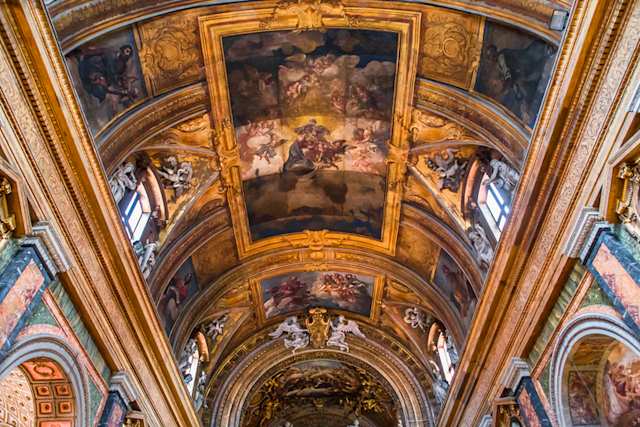
Ornate ceilings and frescoes of the nave in Santa Maria dei Miracoli Church, Venice, Italy
If Venice’s top sights are a little too overcrowded, there are plenty of ways to explore the city off the beaten track. Hidden amongst the waterways and narrow streets are many treasures to be found, offering a more intimate experience away from the masses.
For art and architecture lovers, there are plenty of spots beyond the busy Doge's Palace and Gallerie dell'Accademia. While these are both great to visit, they're smack-dab in the city centre – one of our areas to avoid in Venice if you don't want to fight for space with other tourists. To get up close and personal with true Venetian craftsmanship, be sure to visit Santa Maria dei Miracoli. Often overshadowed by St Mark's Basilica, this church is home to a spectacular interior with coffered ceilings and marble work.
Palazzo Fortuny is an excellent place to view artwork by Mario Fortuny, one of Italy's most influential artists. The museum is a tribute to his life as a stage designer and textile designer, with exhibition rooms draped in luxurious textiles and antiques. Meanwhile, keen photographers should pop into Casa dei Tre Oci for fascinating photography and art shows set within a 1900s neo-Gothic palace.
Literary fans shouldn’t miss a visit to Libreria Acqua Alta, a quirky bookstore hidden along one of Venice’s side streets. Its walls are stacked high with new and used books stored in gondolas, bathtubs, canoes and barrels to avoid getting damaged during the acqua alta.
Venice is filled with spectacular viewpoints, but many of them are so busy that you’ll find it difficult to admire the skyline without people blocking your view. Instead of St Mark’s Campanile or the Rialto Bridge, head to Fondaco dei Tedeschi. This historic building is now a luxury shopping centre, and its rooftop terrace provides breathtaking vistas of Venice without the crowds.
Book skip-the-line tickets and explore after dark
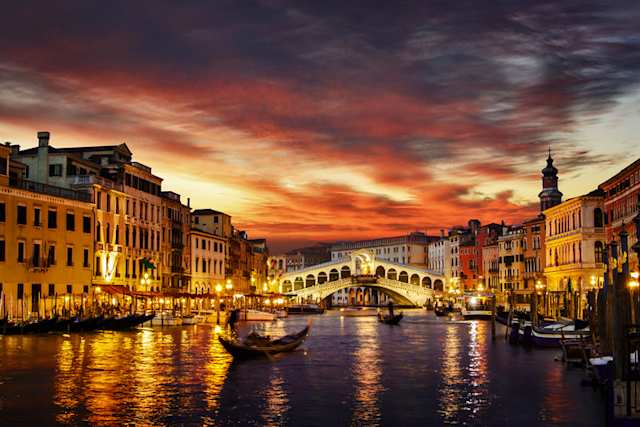
Ponte Rialto and gondolas on the Grand Canal at sunset in Venice, Italy
Just because you’re trying to avoid the overcrowded areas in Venice, it doesn’t mean that you have to completely stay away from the main sights. There are still ways to enjoy the iconic landmarks without bumping into people.
One of these ways is to book skip-the-line-tickets. Popular attractions such as St Mark’s Basilica and the Doge’s Palace can get extremely busy, and it’s not unheard of for people to spend hours queuing for entry. Don’t waste your precious vacation time standing in a crowd – it’s worth spending a little extra for skip-the-line tickets. These are available at most of Venice’s attractions, including the Leonardo da Vinci Museum, the Peggy Guggenheim Collection and Gallerie dell’Accademia. You can also try to avoid queuing by visiting as soon as the attraction has opened or near closing time.
If you don’t mind staying up a little later, one of the best ways to avoid the crowds is to sightsee at night. Visiting after hours is a fantastic way to admire the jaw-dropping interiors of the city’s famous attractions without having to push your way through the throng. Enjoy exclusive entry and get up close and personal with the stunning mosaics in the Basilica, or take the chance to swan around the grand ballroom of the Doge’s Palace while no one else is around. Another interesting way to sightsee is to join a nighttime walking tour for a unique view of the city without the daytrippers. Alternatively, rest your legs and take a nighttime gondola ride to enjoy the beauty of the canals while they’re not clogged with traffic.
Stay in Venice’s quieter neighbourhoods
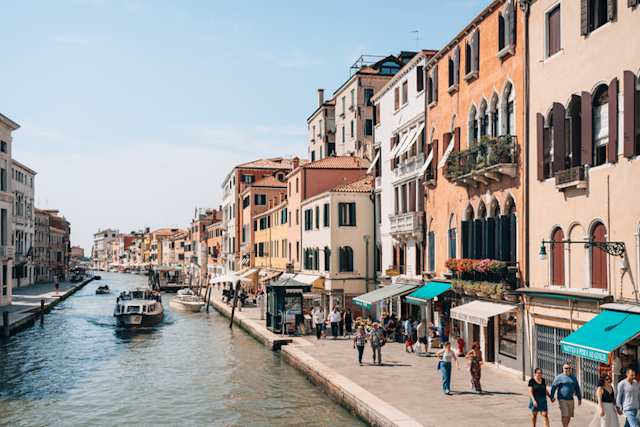
People walking alongside the Cannaregio Canal in Venice, Italy
When searching for a place to stay, San Marco is one of the overcrowded areas to avoid in Venice. Yes, it’s convenient, as its world-famous landmarks are within walking distance, but it’s also busy and noisy. Venice has plenty of quieter, more relaxed neighbourhoods which offer a more authentic experience away from the tourists.
One of our favourite neighbourhoods to stay in is Cannaregio. It’s the best option if you want a taste of local life, although it still draws a number of tourists keen to experience authentic Venice. Cannaregio is best known for Strada Nuova, a shopping street filled with souvenir shops, artisan boutiques, and high-end fashion houses. It's also where you'll find the Venetian Ghetto, the inspiration for Shakespeare's The Merchant of Venice. Many restaurants and pastry shops in this neighbourhood serve traditional Jewish cuisine – we also suggest booking a walking tour to learn more about the area and the hidden synagogues. Afterwards, stop by Ca’ D’Oro Palace to see artwork by Venetian masters like Titian and Bellini.
Another quieter area is Castello. This is one of Venice’s largest neighbourhoods, stretching from the Rialto Bridge to the Arsenale. Take a stroll down Via Garibaldi, a lovely place to shop and try Venetian street food like mozzarella in carrozza (mozzarella and anchovy in a battered and fried sandwich) and scartosso de pesse frito (fried fish in a paper cone).
Santa Croce is one of the least touristy neighbourhoods. There aren’t too many attractions here, but this is a blessing if you’re looking to avoid the crowds. However, you will find a few gems, such as Palazzo Mocenigo with its collection of period fashion and Ca’ Pesaro, a Baroque palace home to a contemporary art collection.
Take a day trip to Venice’s lesser-visited islands

View of bell tower of Torcello Cathedral over canal and trees on the island of Torcello, Venice, Italy
There’s more to Venice than just its main sights. The Venetian Lagoon comprises 118 islands, offering plenty of opportunities for exciting day trips. Murano is known for its historic glassmaking tradition, where you can see artisans in action in their workshops. Meanwhile, Burano is an Instagrammer’s dream, with colourful houses and pretty canals. However, these two islands can get pretty packed and can be considered overcrowded areas to avoid in Venice. With that in mind, we recommend skipping them for quieter options.
Hemingway fans will want to stop by Torcello, an idyllic island with only a handful of residents. Ernest Hemingway spent time here writing Across the River and Into the Trees, inspired by the peaceful surroundings. As well as checking out the Ponte del Diavolo (Devil’s Bridge), visitors can pop into the 7th-century Cathedral of Santa Maria Assunta to see its incredible collection of Byzantine mosaics.
Another island worth adding to your itinerary is San Michele. Also known as the ‘Island of the Dead’ thanks to its cemetery, San Michele is the final resting place of many notable poets, writers and composers, including Igor Stravinsky and Ezra Pound. Wander around the beautiful cemetery, taking in the landscaped grounds and serene atmosphere. The island is also home to the Church of San Michele, which dates back to the 15th century. San Michele is quite a niche place to visit, but it’s worth the trip to enjoy some peace and quiet and experience a different side of Venice.


